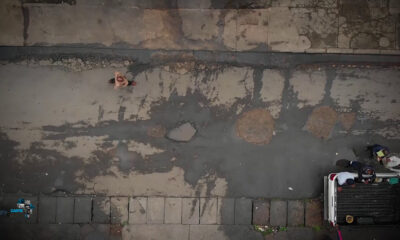News
A Crisis of Care: Over 7,300 Patients Harmed in Johannesburg’s Public Hospitals

A hospital is supposed to be a place of healing. But for thousands of patients in Gauteng’s public hospitals last year, it became a place of preventable harm, lasting injury, and in some cases, death.
Newly revealed data paints a harrowing picture of a healthcare system under severe strain. From April 2023 to March 2024, the province recorded a staggering 7,386 serious adverse events (SAEs)a rise from the already alarming 7,117 incidents the year before.
These aren’t just numbers on a spreadsheet. Each one represents a human being who suffered from a preventable medical error, a fall, a severe bedsore, a healthcare-associated infection, or other failures in care.
The Epicenters of the Crisis
The figures, disclosed by Health MEC Nomantu Nkomo-Ralehoko in response to questions from the DA, show the problem is most acute at the province’s largest and most crucial academic hospitals. These institutions, meant to be centers of excellence, are buckling under the pressure:
-
Chris Hani Baragwanath Academic Hospital: 1,257 incidents
-
Dr George Mukhari Academic Hospital: 600 incidents
-
Steve Biko Academic Hospital: 592 incidents
-
Charlotte Maxeke Johannesburg Academic Hospital: 498 incidents
-
Helen Joseph Hospital: 434 incidents
The list continues with other major facilities like Weskoppies, Leratong, and Tembisa hospitals all reporting hundreds of serious incidents. This data reveals a systemic failure, not isolated problems at a few rogue institutions.
A Chasm of Accountability
Perhaps the most telling statistic is the number of disciplinary actions taken in response to these thousands of serious events: just 55.
DA health spokesperson Jack Bloom sounded the alarm on this glaring lack of accountability. “Many of these incidents could have been avoided. Patients should be healed in hospitals, not suffer injury or death because of poor care,” he stated.
Bloom argues that while the department claims it has reduced its civil lawsuit liabilityfrom R18 billion to under R7 billionthis is a financial fix, not a clinical one. The root cause, a culture where preventable errors are not sufficiently deterred, remains unaddressed.
Plans on Paper, A Different Reality in the Wards
The health department insists it is acting. MEC Nkomo-Ralehoko listed a suite of interventions, from promoting risk assessment and consequence management to hiring more staff and providing psychotherapy for affected families.
She pointed to regular audits, “quality walkabouts,” and continuous staff training as proof of their commitment.
However, the relentless year-on-year rise in patient harm tells a different story. As Bloom pointedly noted, “The department claims it implements a wide variety of measures to reduce SAEs, but these are clearly failing as they go up year by year.”
The tragic reality is that for the thousands of patients and their families affected last year, these plans and procedures were too little, too late. The data suggests a deep-seated crisis of leadership, resources, and culture that no amount of paperwork can easily fix. Until that changes, the very places meant to offer refuge will continue to be a source of danger.
{Source: Timeslive}
Follow Joburg ETC on Facebook, Twitter , TikTok and Instagram
For more News in Johannesburg, visit joburgetc.com



























